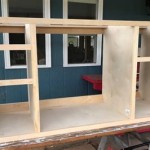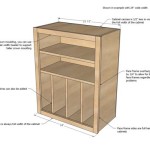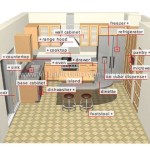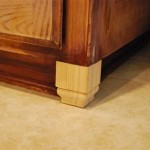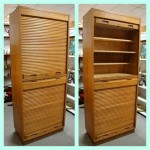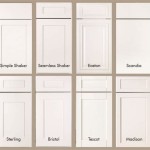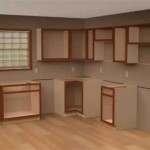Standard Depth of Bottom Kitchen Cabinets: A Guide to Functionality and Aesthetics
The depth of bottom kitchen cabinets is a crucial aspect of kitchen design, influencing both functionality and aesthetics. While the standard depth for bottom cabinets is generally recognized, factors like countertop overhang, appliance placement, and personal preferences can lead to variations. This article provides a comprehensive understanding of standard bottom cabinet depths, exploring considerations for maximizing space and achieving a harmonious kitchen design.
Standard Bottom Cabinet Depths
The standard depth for bottom kitchen cabinets is typically 24 inches. This measurement encompasses the cabinet box, drawer fronts, and any door thickness. However, cabinet manufacturers may offer variations, with some offering depths of 21 inches or 27 inches. 21-inch cabinets, often found in smaller kitchens, can provide a more compact feel while allowing for a narrower countertop overhang. Conversely, 27-inch cabinets provide ample storage space and can accommodate larger appliances or accessories.
Factors Affecting Cabinet Depth Choice
Several factors contribute to the selection of bottom cabinet depth, including:
- Countertop Overhang: The countertop's overhang, typically 1.5 inches, should be considered when determining the overall depth of the cabinet and countertop combination. This overhang provides a comfortable workspace and prevents items from falling off the edge.
- Appliance Placement: The placement of appliances like dishwashers or ovens may influence cabinet depth. For example, a built-in dishwasher might require a 24-inch cabinet depth to ensure proper installation and functionality.
- Storage Needs: Consider the amount of storage space required for various kitchen items, such as pots, pans, dishes, and appliances. Deeper cabinets offer more storage capacity, while shallower cabinets may be sufficient for smaller kitchens or those with limited storage needs.
- Kitchen Layout: The overall layout of the kitchen can impact the depth of bottom cabinets. In smaller kitchens, shallower cabinets can help create a more open and spacious feel, while in larger kitchens, deeper cabinets can provide more storage and functionality.
- Personal Preferences: Ultimately, personal preferences play a significant role in choosing cabinet depth. Some individuals may prefer a compact look with shallower cabinets, while others may prioritize spaciousness and opt for deeper cabinets.
Optimizing Space and Functionality
Regardless of the chosen depth, optimizing space and functionality within bottom kitchen cabinets is crucial. Here are some tips:
- Utilize Drawer Dividers: Drawer dividers are a valuable tool for organizing utensils, cutlery, and other items. They create compartments within drawers, ensuring efficient use of space and preventing items from cluttering together.
- Implement Pull-Out Shelves: Pull-out shelves, especially in base cabinets used for storing pots and pans, provide easy access to items stored in the back. They eliminate the need to reach deep within the cabinet, preventing potential back strain.
- Incorporate Lazy Susans: Lazy Susans are particularly useful in corner cabinets. They allow you to rotate the shelf, providing access to items that might otherwise be out of reach.
- Consider Cabinet Styles: Different cabinet styles offer varying storage options. Cabinets with multiple drawers or shelves can enhance storage capacity, while cabinets with open shelves can provide easy access to frequently used items.
In conclusion, the standard depth of bottom kitchen cabinets is a starting point for design considerations. Factors like countertop overhang, appliance placement, and personal preferences play a crucial role in determining the optimal depth. By carefully considering these factors and implementing space-saving techniques, homeowners can ensure a kitchen that is both functional and aesthetically pleasing.
It is essential to consult with a kitchen designer or contractor before making decisions regarding cabinet depth. Their expertise can help ensure that the chosen cabinet depths align with the specific needs and aesthetic preferences of the homeowner, contributing to a well-planned and functional kitchen.

Kitchen Cabinet Dimensions

Base Cabinet Size Chart Builders Surplus

Standard Cabinet Dimensions

Kitchen Base Cabinet Size Chart Builders Surplus Cabinets Sizes Espresso

Kitchen Cabinet Dimensions Size Guide

Kitchen Cabinet Sizes What Are Standard Dimensions Of Cabinets

N Standard Kitchen Dimensions Renomart

Proper Depth For Frameless Cabinets

Woodcraft Custom Kitchen Cabinet Measurements

Cabinet Dimensions Kitchen Base Cabinets

